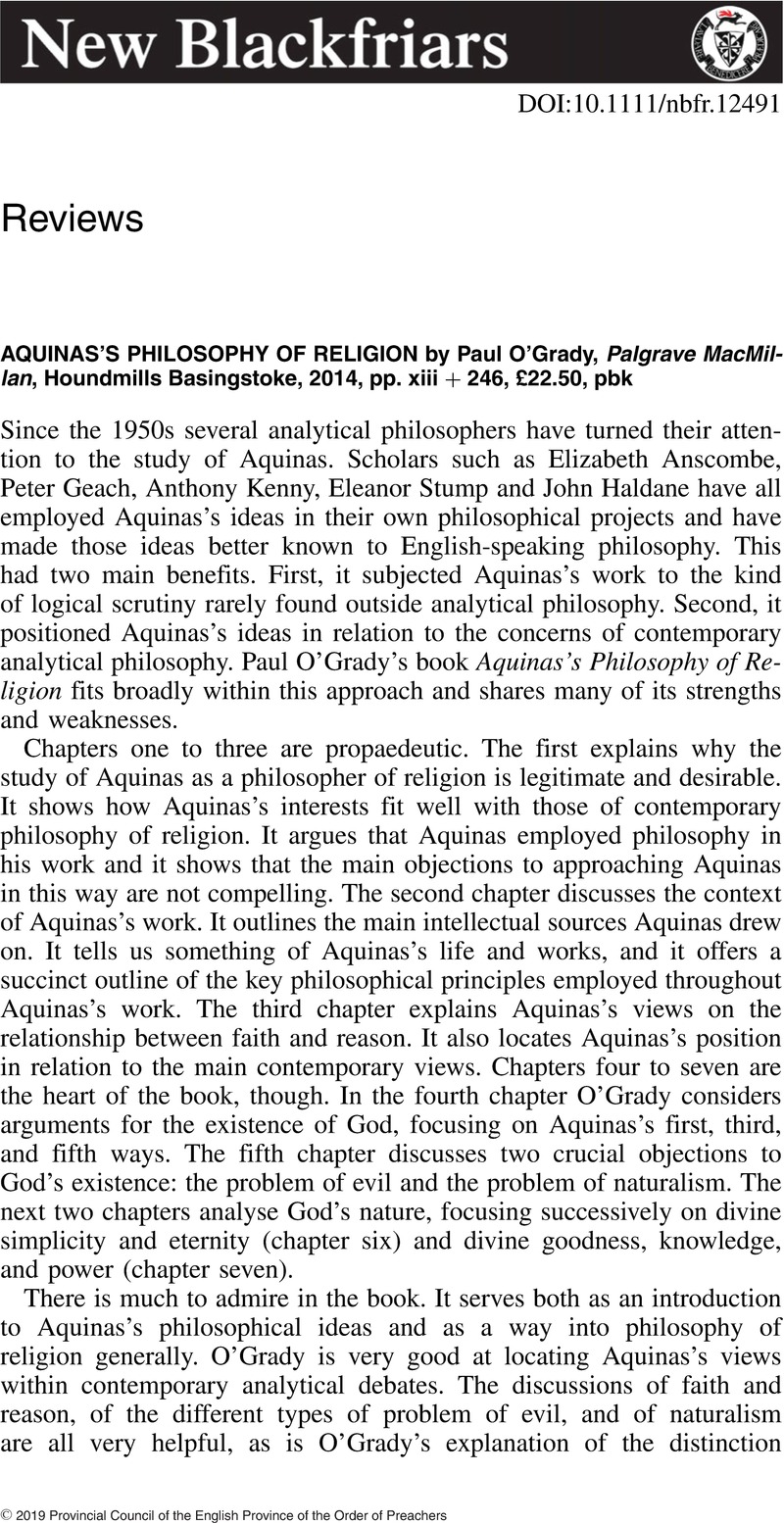No CrossRef data available.
Article contents
Aquinas's Philosophy of Religion by Paul O'Grady, Palgrave MacMillan, Houndmills Basingstoke, 2014, pp. xiii + 246, £22.50, pbk
Review products
Aquinas's Philosophy of Religion by Paul O'Grady, Palgrave MacMillan, Houndmills Basingstoke, 2014, pp. xiii + 246, £22.50, pbk
Published online by Cambridge University Press: 01 January 2024
Abstract
An abstract is not available for this content so a preview has been provided. Please use the Get access link above for information on how to access this content.

Information
- Type
- Reviews
- Information
- Copyright
- Copyright © 2019 Provincial Council of the English Province of the Order of Preachers

